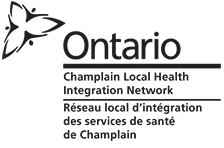
Epidemiology
- In children, 6- to 12-month prevalence is estimated at 4% (DSM-5)
- In adolescents, 12-month prevalence is 1.6% (DSM-5)
- SAD decreases in prevalence from childhood through adolescence and adulthood
- Most prevalent anxiety disorder in children under 12 years
- Highly comorbid with generalized anxiety disorder and specific phobia
Case
S. is a 6 year old girl who lives at home with her parents and older sibling. Since starting school she has missed several days and is has become increasingly upset about going to school. At least once a week, she screams to stay home from school and on other days she insists upon her mom staying in the school hallway for at least an hour. If her mom is ever late picking her up from school, she threatens not to go to school the next day. Her mom must be present at field trips and birthday parties and must always be in sight at the park. She often has nightmares about monsters coming to take her away and worries about her parents having an accident or being harmed (anxietybc.com).
Screening
Consider screening a child/youth with risk factors such as:
- Significant life stress (death of a relative or pet, illness of the individual or relative, change of schools, parental divorce, new neighbourhood, immigration)
- Parental intrusiveness (excessive assistance in child’s daily activities)
- Low parental warmth
- Does the child avoid certain age appropriate situations or activities, or avoid doing them without a parent?
- Does the child frequently have stomachaches, headaches, or episodes of hyperventilation?
Diagnosis
-
Key features are:
- Excessive fear or anxiety concerning separation from home or attachment figures
- Anxiety exceeds what is expected given the person’s developmental level
- Avoidance of separation from attachment figure
- Somatic complaints (stomachache, nausea) are commonly associated with separation or anticipation of separation
DSM-5 Criteria
Separation anxiety disorder consists of persistent and excessive anxiety related to separation or fear of separation from attachment figures (e.g. parents, close family members), as evidenced by at least 3 of the following:
- Recurrent excessive distress when anticipating or experiencing separation from home or from major attachment figures
- Persistent and excessive worry about losing major attachment figures or about possible harm to them, such as illness, injury, disasters, or death
- Persistent and excessive worry about experiencing an untoward event (eg, getting lost, being kidnapped, having an accident, becoming ill) that causes separation from a major attachment figure
- Persistent reluctance or refusal to go out, away from home, to school, to work, or elsewhere because of fear of separation
- Persistent and excessive fear of or reluctance about being alone or without major attachment figures at home or in other settings
- Persistent reluctance or refusal to sleep away from home or to go to sleep without being near a major attachment figure
- Repeated nightmares involving the theme of separation
- Repeated complaints of physical symptoms (eg, headaches, stomachaches, nausea, vomiting) when separation from major attachment figures occurs or is anticipated
The disturbance is not better explained by another mental disorder, such as refusing to leave home because of excessive resistance to change in autism spectrum disorder; delusions or hallucination concerning separation in psychotic disorders; refusal to go outside without a trusted companion in agoraphobia; worries about ill health or other harm befalling significant others in generalized anxiety disorder; or concerns about having an illness in illness anxiety disorder
Differential Diagnosis
|
In SAD, anxiety concerns separation from attachment figures and if other worries are present they do not predominate the picture |
|
Threats of separation may lead to panic attacks but the anxiety does not stem from a worry of being incapacitated by an unexpected panic attack |
|
Patients with SAD are not anxious about being trapped |
|
School avoidance is common in conduct disorder but anxiety about separation is not responsible for the absences |
|
School refusal may be due to social anxiety disorder where fear is of being judged negatively by others |
|
Common to fear separation from loved ones after traumatic events but anxiety in PTSD stems from memories associated with the event itself and not from worries about attachment figures and separation from them
|
|
Main concern is about the medical diagnosis and not about being separated
|
|
It is expected for a child to experience intense longing for the deceased accompanied by sorrow and emotional pain, whereas fear of separation from other figures of attachment is central to SAD |
|
Patients may be reluctant to leave home but their main concern is not fear of losing their attachment figure. Patients with SAD may however become depressed while separated or in anticipation of being separated |
|
Should only be considered if there is persistent oppositional behaviour and not just in response to separation |
|
While SAD may present with unusual perceptual experiences, they are usually misperception of an actual stimulus and are reversed by the attachment figure’s presence |
|
SAD focuses on the proximity and safety of attachment figures and not a tendency to rely on others as in dependent personality disorder Borderline personality disorder includes the fear of abandonment by loved ones but also involves problems with identity, self-direction, and impulsivity unlike SAD |
Investigations
- Separation anxiety disorder is a clinical diagnosis
- There are no pathognomonic investigations.
-
Rule out medical causes of anxiety such as
- Thyroid problems
Physical Exam
- There are no specific physical findings in separation anxiety disorder
Management: Overview
- Currently, psychotherapies have the most evidence for the treatment of SAD
-
This includes
- Psychoeducation
- Relaxation training
- Role-playing
- Parent involvement may enhance effectiveness and maintenance of treatment
- Ensure that the child can turn to parents for support, and that the parents can validate and provide empathy to the child
- Medications are not recommended as a first line treatment; rather, consider medications if non-medication strategies haven’t been successful
Management: Psychological
General strategies for supporting any child with mental health issues include:
-
Ensuring that
- Children can express fears to adults
- Adults can validate their children’s fears, provide empathy and support, as opposed to using lecturing, nagging
- Teaching patients coping skills (Ponton et al., 2013)
- Learning to recognize their anxious feelings surrounding separation and identify their physical reactions
- Learning to identify their thoughts in separation situations that provoke anxiety
- Learning to develop a plan to cope with these situations adaptively
- Learning to evaluate the success of their coping strategies
- Gradual exposure to anxiety-provoking situations
-
The child and parent help develop a list of situations that the child is either fearful of and/or is currently avoiding
- Patient may rank the separation situations based on level of fear (“fear ladder”)
- As the patient works through his/her ladder, length of exposure may also be increased
- The exposure timeline is completely patient-dependent and will be different for every child
-
Relaxation training is helpful for the physical symptoms and work best if a family member completes the exercises with the child
- Breathing (slow, balloon breathing)
- Muscle relaxation (spaghetti legs)
- For younger children, it may be more difficult for them to identify their thoughts
- Play therapy may be used to express feelings (toys, puppets, games, art)
-
Parent focused treatment such as:
- Teaching parents interaction skills focusing on parental warmth, attention, and praise (Ehrenreich et al)
- Teaching parents behaviour management techniques
-
Consider Family Therapy when there are significant family issues
- Help address how the patient’s SAD is affecting others in the family (parents and siblings)
- Help identify factors in the home, family dynamics, and parenting styles that can be addressed
- Help create teamwork in the family towards helping their family member
Management: Medications
- Medications are second line therapy for SAD
- May consider medications after lack of response to non-medication strategies such as cognitive behaviour therapy, and/or serious psychiatric co-morbidities such as other anxiety disorders or mood disorders
|
Medication |
Dosage/Target |
Maximum |
|
Fluoxetine (Prozac)
|
Child: Start 5 mg daily; target 10-20 mg daily Youth: Start 5-10 mg daily; target 10-60 mg daily |
Child 30-40 mg Youth: 60-80 mg
|
|
Escitalopram (Cipralex or generic)
|
Child: Start 5 mg daily; target 10 mg daily Youth: Start 5-10 mg daily; target 10-20 mg daily |
Child: 10 mg Youth: 20 mg |
|
Citalopram (Celexa or generic) |
Child: Start 5-10 mg daily; target 10-40 mg daily Youth: Start 10 mg daily; target 10-40 mg daily for most
|
Child: 20-30 mg Youth: 40-60 mg
|
|
Sertraline (Zoloft or generic)
|
Child: Start 25 mg daily; target 50-200 mg daily Youth: Start 50 mg daily; increase by 50 mg/day every 2-weeks until satisfactory clinical response or maximal dosage Target 50-200 mg daily |
Child: 100 mg Youth: 200 mg
|
|
Fluvoxamine (Luvox or generic) |
Child: Start 25 mg daily; target 25-200 mg daily Youth: Start 25-50 mg daily; target 50-300 mg daily
|
Child: 100-200 mg daily Youth: 200-300 mg daily
|
When to refer
-
Consider referral to mental health professionals if
- Severe functional impairment or deterioration
- Multiple co-morbid psychiatric or medical illness
-
Lack of response to initial treatment attempts
- Consider communicating with the school if there is significant school impairment such as school absences
Resources for patients
- Anxiety Disorders Association of Ontario http://www.anxietydisordersontario.ca
- Canadian Mental Health Association https://www.cmha.ca
References
- American Psychiatric Association. Diagnostic and Statistical Manual of Mental Disorders: Fifth Edition (DSM-5), 2013.
- Anxietybc.com. Separation Anxiety Disorder | Anxiety BC [Internet]. 2015 [cited 17 June 2015]. Available from: http://www.anxietybc.com/parent/separation.php
- Ehrenreich JT, Santucci LC, Weiner CL. Separation anxiety disorder in youth: phenomenology, assessment, and treatment. Psicol Conductual. 2008; 16(3): 380-412.
- Manassis K. Childhood anxiety disorders: Approach to intervention. Can Fam Physician. 2004; 50: 379-384
- Ponton, L. Treatment of Separation Anxiety Disorder. Psych Central. 2013 Retrieved on June 16, 2015, from http://psychcentral.com/lib/treatment-of-separation-anxiety-disorder/
About this Document
Written by members of the eMentalHealth.ca/PrimaryCare team which includes members of the Department of Psychiatry and Family Medicine at the University of Ottawa. Reviewed by members of the Family Medicine Program at the University of Ottawa, including Dr's Farad Motamedi; Mireille St-Jean; Eric Wooltorton.
Disclaimer
Information in this pamphlet is offered ‘as is' and is meant only to provide general information that supplements, but does not replace the information from a health professional. Always contact a qualified health professional for further information in your specific situation or circumstance.
Creative Commons License
You are free to copy and distribute this material in its entirety as long as 1) this material is not used in any way that suggests we endorse you or your use of the material, 2) this material is not used for commercial purposes (non-commercial), 3) this material is not altered in any way (no derivative works). View full license at http://creativecommons.org/licenses/by-nc-nd/2.5/ca/
























